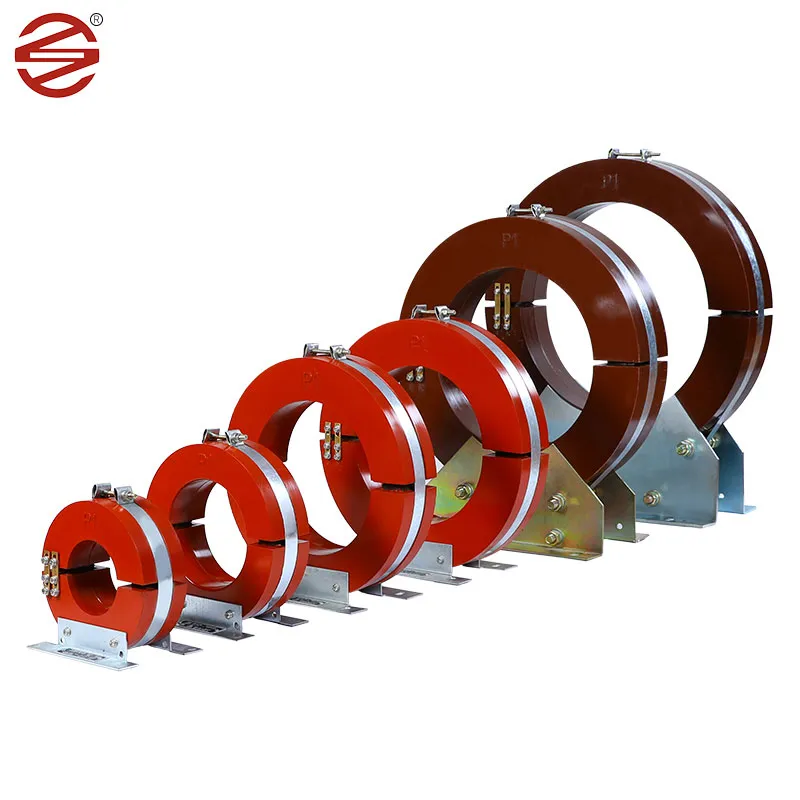Choosing the Right Current Transformer: Key Considerations for Your Application
2024-08-15
When selecting a current transformer (CT) for your electrical system, several factors need to be considered to ensure optimal performance and accuracy. The right CT can enhance the safety, reliability, and efficiency of your system, while an improper choice can lead to inaccurate measurements and potential hazards. In this blog, we’ll discuss the key considerations when choosing a current transformer for your specific application.

1. Primary Current Rating
The primary current rating is one of the most critical factors to consider when selecting a CT. This rating should match the maximum current expected in the primary circuit. For example, if the circuit is expected to carry a maximum current of 200A, you should choose a CT with a primary current rating that matches or exceeds this value.
It’s important to select a CT with a primary current rating that closely matches your system’s requirements to ensure accurate measurement. Using a CT with a rating that is too high may result in lower accuracy, while a rating that is too low could lead to saturation and inaccurate readings.
2. Secondary Current Rating
The secondary current rating of a CT is typically standardized at 1A or 5A. This rating is the current that will flow in the secondary circuit when the rated primary current is applied. The secondary current rating must be compatible with the connected measurement instruments, such as ammeters, energy meters, or protective relays.
Choosing the correct secondary current rating ensures that the CT can deliver the appropriate current to the measuring devices, providing accurate readings and effective protection.
3. Accuracy Class
The accuracy class of a current transformer indicates the level of accuracy it can provide under specified conditions. CTs are classified based on their accuracy, with common classes being 0.1, 0.2, 0.5, 1, and 3. The lower the number, the higher the accuracy.
- Class 0.1 or 0.2: Used in applications where high precision is required, such as revenue metering or energy management.
- Class 0.5: Suitable for general-purpose metering applications.
- Class 1 or 3: Typically used in protection circuits where absolute accuracy is less critical.
Selecting the right accuracy class is essential for ensuring that the CT meets the accuracy requirements of your application.
4. Burden
The burden of a current transformer refers to the total impedance (in ohms) of the secondary circuit, including the connected instruments and wiring. CTs are designed to operate within a specific burden range. Exceeding this range can lead to errors and reduced accuracy.
When choosing a CT, it’s important to calculate the total burden of the secondary circuit and ensure that it falls within the CT’s specified burden rating. This ensures that the CT operates correctly and provides accurate measurements.
5. Saturation Point
The saturation point of a CT is the level of primary current at which the core becomes magnetically saturated, leading to distorted and inaccurate output. For protection applications, it’s essential to choose a CT with a high saturation point to ensure that it can accurately measure high fault currents without saturating.
In metering applications, the saturation point is less critical, but it’s still important to choose a CT that can handle the expected maximum current without reaching saturation.
6. Physical Size and Installation
The physical size and installation method of the CT are also important considerations. Depending on the available space and the installation environment, you may need to choose between different types of CTs, such as:
- Wound-Type CTs: Compact and suitable for low to medium current applications.
- Bar-Type CTs: Larger and used in high-current applications, often installed on busbars.
- Toroidal CTs: Ring-shaped and used for differential protection and ground fault detection.
- Split-Core CTs: Can be installed around existing conductors without disconnecting them, ideal for retrofitting.
Consider the installation environment, available space, and ease of installation when selecting a CT.
Conclusion
Selecting the right current transformer for your application is crucial for ensuring accurate measurement, effective protection, and reliable system operation. By considering factors such as primary and secondary current ratings, accuracy class, burden, saturation point, and installation requirements, you can choose a CT that meets your specific needs. Whether you’re designing a new system or upgrading an existing one, the right CT will play a vital role in the safety and efficiency of your electrical network.


